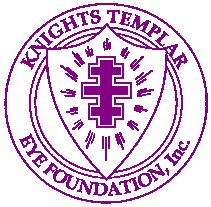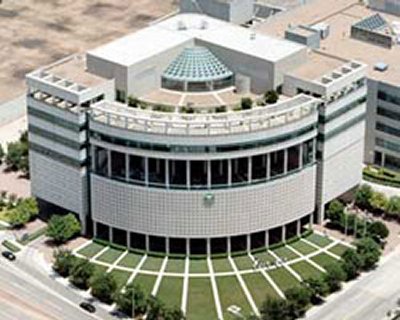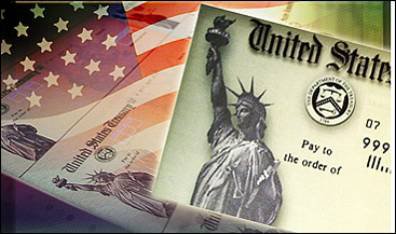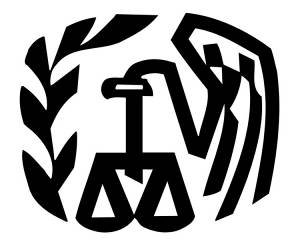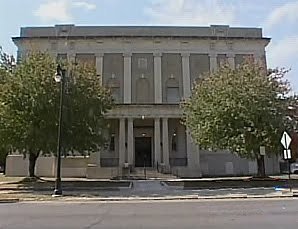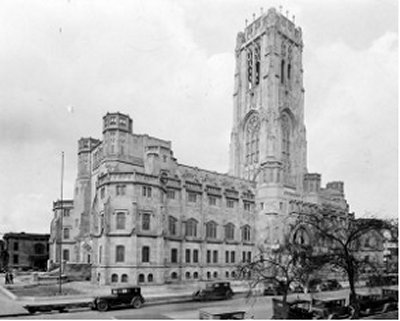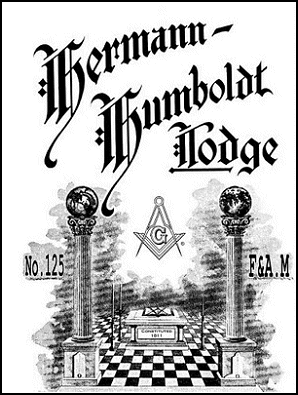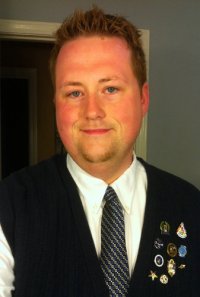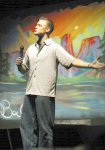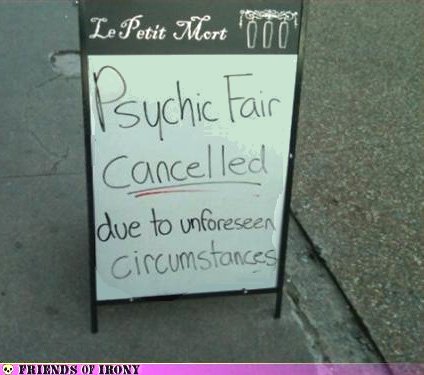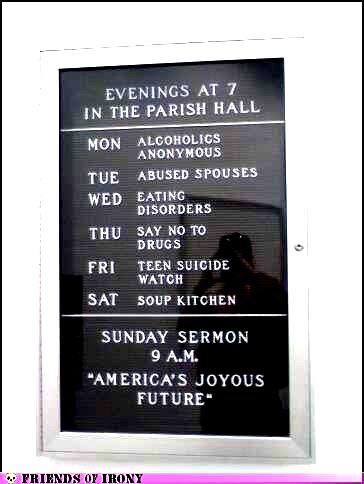
|
November 2010

Stanfield Lodge #217 A. F. & A. M.
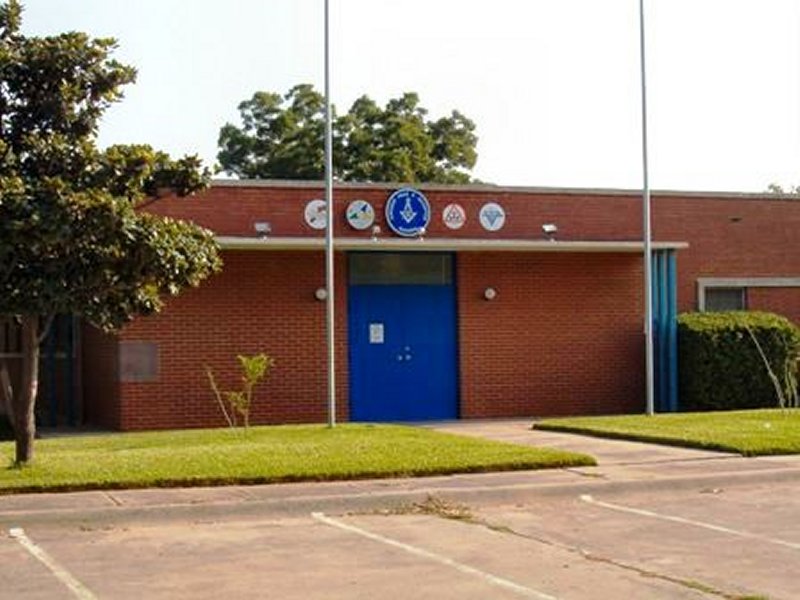 Stanfield Lodge #217 A. F. & A. M. in 2005 |
|
the font face to make it a little easier for some of us older Brothers to read. "This is a sample of old font face." |
|
Page III | |
By Brother S. M. Bradley May 1st, 1919
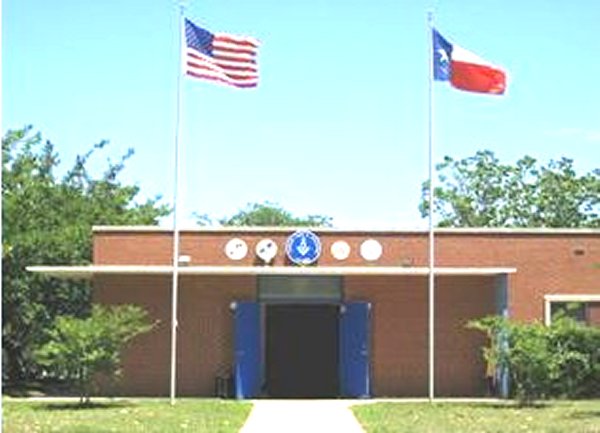
On October 14th. 1857, a dispensation was granted by Deputy Grand Master John E. Cravens for a Masonic lodge at Denton, Texas, to be known as Stanfield lodge, and in November, following, the lodge was set to work by the District Deputy Grand Master. The lodge continued to work under dispensation until the meeting of the Grand Lodge at Houston in June, 1858, when a charter was issued for Stanfield Lodge No. 217 During the first few years after the lodge was constituted and set to work, Stanfield Lodge had a rough and rugged road to travel over. Most of the officers and members lived of five to fifteen miles from Denton, where the lodge met, and when they attended there lodge meetings it meant a long ride on horseback, over a sparsely settled country with no roads. And this accounts for them having their charter provide that their stated meetings should be held "on or before the full moon of each month," so that the brethren could have the advantage of the moonlight when attending their lodge meetings. A. P. Lloyd was County Clerk at the time the Lodge was set to work, under dispensation in October, 1857, and there being no other room in the town which was large enough to be used as a lodge room, the Lodge was set to work in the County Clerk's office in the Court House. The lodge continued to hold its meetings in the County Clerk's office until at the meeting of the Grand Lodge in June 1859, District Deputy Grand Master, John M. Crocket, having visited and inspected the lodge, made a report to the Grand Master, in which he used the following words:-"Stanfield Lodge No. 217, has not a suitable building and unless it can satisfy the Grand Lodge that it will have, should be suspended." With this warning, the brethren set to work to devise a plan to build or secure a suitable lodge room which would satisfy the requirements of the Grand Lodge, when it was decided to build a Masonic Hall. Brother F. L. Moore donated a lot of ground, situated on the west side of South Elm street, being about a half acre of land, almost a quarter mile from the Public Square. But the problem then confronting these brethren was how to get the lumber and material with which to build their lodge hall. The nearest lumber to be had for building purposes was in East Texas. They purchased their lumber at Winnsboro in Wood County, and with ox wagons, hauled all the lumber used in the building, except the dimension or framing timbers, from Winnsboro, a distance of 150 miles. The framing timbers, and dimension lumber was made of oak trees, that were felled, hewn and prepared in the forest of Denton County; conveyed, thence in ox wagons, over rough roads to the building site on Elm street, where it was set up and adjusted with the assistance of saws and hammers prepared for the purpose. And it is said, that the building, when completed, fitted with such exact nicety in all its parts, that it was an honor to Stanfield Lodge, and an ornament to the Community. This Masonic Hall was a two story, framed building, twenty four feet wide, and forty eight feet long. The first floor was intended for a school house, that being the only school house in the town at that time. The second story was for the Lodge room. This building served as the only school house for the children of Denton for several years, the only requirement made by the lodge was that all orphan children of Master Masons should have free tuition. It was also used as a church, or house of worship, by all religious denominations, free of charge. In September 1859, Stanfield Lodge moved into its new lodge room, and this building was the home of the lodge for more than forty years. And when, in 1905, this building was sold to Brother Ponder it was still a good and substantial building. From the time Stanfield Lodge first occupied its Lodge room on South Elm Street in 1859, there was a steady and healthy growth in its membership, increasing from 27 when the charter was issued in 1858, to more than fifty at the outbreak of the Civil War in 1861. And, even during the distressing conditions brought about by the war, the lodge continued to meet and practice the precepts of Freemasonry. At the close of the War in 1865, it had a membership of more than 75. Stanfield Lodge continued to occupy its lodge room from 1859, until about the year 1880, when the brethren became somewhat dissatisfied with the location of the lodge, it being so far from the business part of the town. A committee was appointed to secure a suitable lodge room more conveniently located. This committee soon made a contract with Brother F. E. Piner for the lease of the second story of a new brick building which he had erected at the southeast corner of the Public Square, at an annual rental of $300.00, and in the fall of the year 1880, the lodge moved into its new quarters in the Piner Building. The lodge room was well furnished and conveniently located on the Public Square, and for a time the Lodge continued to grow and prosper. But for some reason, after three or four years, there was a loss of interest in the Lodge; there were but few applications for degrees, and there seemed to be a general apathy among the members, so, that it was not long until the lodge did not have sufficient income from fees and dues to pay the rent on the lodge room. This condition continued until the year 1885, when there was due Brother Piner for unpaid rent about $300.00, and no funds with which to pay it. About this time some of the brethren became so discouraged that they insisted on surrendering the charter, and let the door on Masonry in Denton be closed. However, some of the brethren would not consent to let their lodge die of inanition, and advocated moving back to the old lodge room on South Elm street, and by a vote of the lodge, it was decided to move the lodge back into their old home. As a result of this action of the lodge, a number of those who had been rather zealous Masons when the lodge was prosperous, and everything looked bright, demitted, thus greatly reducing the number of active members. But after the lodge had moved back into its old lodge room in 1886, it took on a new life. 1880 to 1886, was a crucial time for Stanfield Lodge. It was a case of life or death. And there are a number of members, all past Masters of the lodge, whose devotion to the percepts and the principals of Masonry helped to keep the lodge alive. Others still living were equally active in making it possible for Stanfield Lodge to be a growing and prosperous lodge in 1919, owning property worth almost $20,000.00, with an active membership of more than two hundred. The lodge continued to occupy its old lodge room on Elm street from the time it moved back in 1886, during the following eight or ten years. And during that time it enjoyed a healthy and a steady growth in membership. In May 1894, a committee was appointed to devise a plan for building or securing a suitable lodge room near the Public Square, which would not be so inaccessible as the old lodge room, and on September 18th, a contract was made with Brother W. A. Ponder for the purchase of the second story of the brick building which he was then having erected on Hickory street. This committee was composed of S. M. Bradley, J. W. Underwood, J. W. Cook and R. M. Kelsoe. The price which the lodge was to pay Brother Ponder for the upper floor of this building was $1750.00, Brother Ponder agreeing to take the old lodge building, together with the lot on which it stood at $400.00, in part payment for the lodge room. On November 10th, following, a committee was appointed to solicit and collect subscriptions and donations to pay for the new lodge room. All funds then in the treasury and which should afterwards come into the treasury from fees and dues, after paying the Grand Lodge dues, were to be applied in payment of the debt which the lodge had agreed to pay Brother Pinder, and which had been secured by promissory notes executed by the lodge. In December, 1894, Stanfield Lodge held its first meeting in its new lodge room, which has been the home of the lodge since that time. The notes which had been made by the lodge for the purchase price of the lodge room were paid off as they became due, and Stanfield Lodge was the owner of the second story of this building.
|
|
Page IV | ||||
Continued From Page III
These notes were executed by Stanfield Lodge No. 217, Denton Chapter No. 80, and Denton Commandery U. D. One note was to be paid each year until the whole amount of $7,000.00 should be paid. In pursuance of this contract, on July, 1905, Brother W. A. Ponder in consideration of $8,300.00, executed his deed conveying the property to Stanfield Lodge, Denton Chapter and Denton Commandery, to be held and owned by them, jointly, each of said Masonic Bodies to pay one third of the notes which had been given for the purchase price. This proved to be a splendid investment for Stanfield Lodge, and as is usual in such matters, there are a few members of this lodge who deserves a large share of the credit. Coming generations of Masons who will enjoy the benefits and the profits resulting from the ownership of this lodge property, will owe at least a debt of thanks to all those earnest Masons who made it possible by their efforts, for the Masonic Bodies of Denton to reap the benefits of their labors.
In the year 1866, the charter of Stanfield Lodge was arrested for a flagrant violation of Masonic law in conferring the degrees upon J. R. McCormick, who had lost one of his legs. J. R. McCormick (known as Bob McCormick) had lived in Denton before the outbreak of the Civil War. He was a most amiable and lovable man. All who knew him liked Bob McCormick. When the Civil War came on, he, like most of the men in the South, volunteered to fight for what he believed to be the rights of the Sunny South. He made a gallant soldier. During a battle in Louisiana, he was shot in the leg, and to save his life, his right leg was amputated just below the knee. When he returned to his home all his friends and acquaintances sympathized with him in his misfortune. He was elected Tax Collector for the County at the first election after the close of the war. He wanted to be a Mason. Members of the lodge who had known him intimately, and who knew his splendid moral character, were anxious for him to be made a Mason. After consultation, and due deliberation, it was decided by those best posted in Masonic law that if he had an artificial leg on which he could walk without difficulty, he would not be physically disqualified to be made a Mason. He procured a cork leg, and with the aid of this he could walk without difficulty, almost as well as if he had two real legs. He was soon elected and received the degrees in Masonry, and was a member in good standing of Stanfield Lodge. This occurred in the later part of the year 1866, and when it was made known to the Grand Master, Richard Douglass, during the year 1867, he promptly arrested the charter, and Stanfield Lodge was in a state of innocuous desuetude for more than three years following. When the Grand Lodge met in Houston in June, 1870, A. T. Donaldson, who was Worshipful Master of the Lodge at the time the charter was arrested, and J. A. Carroll, who was Junior Warden at that time, were selected by the lodge to go before the Grand Lodge in an effort to have the charter restored. Stanfield Lodge, its charter having been arrested, was not entitled to representation in the Grand Lodge, and these brethren procured proxies from Pilot Point Lodge and Gainesville Lodge, and with these as their credentials, attended the Grand Lodge. Not having an automobile, or other public conveyance, they saddled their horses, and traveled on horseback to Bryan, a distance of about two hundred miles, where they made connection with the Texas Central Railroad, and traveled thence, by train to Houston. At this meeting of the Grand Lodge the question of the restoration of the charter of Stanfield Lodge was referred to the committee on Grand Officers Reports, and after A. T. Donaldson and J. A. Carroll, as the representives of Stanfield Lodge, had made explanations to the effect that the action of the lodge in conferring degrees on a man with only one leg, was not done with any intention of violating the laws of Masonry and the edicts of the Grand Lodge, but was only the result of ignorance of Masonic Law, and offering profuse apologies, and assurances that the lodge would not again violate the laws of Masonry, and the edicts of the Grand Lodge, the Committee made their report, in which they made use of the following language:- "We entirely concur on the sentiments of the Grand Master in the case of Stanfield Lodge No. 217, in arresting its charter. It grievously erred, and violated the laws, but, we think, more from ignorance and reliance on erroneous council than from intention. Moreover, they confess their error, and do not persist in maintaining their wrong action. We, therefore, recommend that the return of the charter be left to the decision of the Grand Master, at such time and on such terms as may be satisfactory to him." Soon after this, in September, 1870, the charter was restored by Grand Master, C. M. Winkler, and Stanfield Lodge was again a working lodge. At the first election of officers of the lodge after this, J. R. McCormick, was elected secretary of the lodge, and was continued as secretary for several consecutive years. He soon became proficient in the work, and proved to be one of the most active and earnest members of the lodge. He was a regular attendant at the meetings of the lodge, and took an active interest in all the activities of the lodge. During his long membership he filled all the important offices of the lodge, and always with efficiency and satisfaction to his brethren. He served as Worshipful Master of the lodge for nine years. Few, if any members of this lodge has been worth more to Freemasonry in Denton County, than Bob McCormick. He was a member of the lodge from 1866, until his death, in 1907, when he passed away at Oachaca, Mexico, where he had been interested in a mining business for several years. "Peace to his ashes". Such infractions of the ancient laws and landmarks of Masonry as that of Stanfield Lodge in conferring the degrees on a man with only one leg were of frequent occurrence after the close of the Civil War, resulting from the chaotic social and economic conditions, and the difficulty of disseminating the work, and the laws of Masonry. Sympathy for worthy men who had been maimed in the military service was the cause of many hopeless cripples being made Masons. As an example:- A lodge in Kentucky, about this time, conferred the degrees on a candidate who had lost his right arm above the elbow.
The charter of Stanfield Lodge was arrested a second time for conferring the degrees on F. M. Rayzor, who had lost the first joint of the third finger of his left hand. In November, 1898, he was elected, and in due course, receiver the degrees. When this action of the lodge was reported to Grand Master, Sam R. Hamilton, on April 3, 1899, the charter was arrested and the door of the lodge was closed a second time, for violating the laws of Masonry. On June 9th, following, the writer, who was District Deputy Grand Master, made a visit to Grand Master Hamilton, and after explaining that it was not known by the officers of the lodge at the time the degrees were conferred, that the candidate was physically disqualified, and that there was not intention to violate the laws and edicts of the Grand Lodge, the charter was restored. |
|
Page V | ||||||
When the War Stood Still in Galveston By Blake From .Masons Of Texas
By way of background, the Union Navy established a blockade of Port Galveston on October 6, 1862. Later, on Christmas Day, Federal troops landed and placed the entire island under Northern control. In the meantime, Texas gained a battle-tested hero as Confederate General John Bankhead Magruder, nicknamed "Prince John" for his dramatic flair and goldbraided pomp, was transferred to command the War Department of Texas, New Mexico and Arizona on October 10, 1862. Magruder earned the nickname "Prince John" for his stylish uniforms and theatrical mannerisms. Texas State Library, Austin General Magruder, a West Pointer, had been thrice promoted in the Mexican War for "gallant and meritorious conduct" and was credited with directing and winning the first land battle in the Civil War for Southern Independence. Describing the battle, the Richmond Dispatch reported that Magruder had met a flag of truce in the conflict and granted the removal of a slain Federal officer. In parting, he had shaken hands with a Union Lieutenant and said, "We part as friends, but on the field of battle we meet as enemies." Although politicians might differ, General Magruder had expressed the feeling of most Masons and most combat soldiers of either North or South. And, it is interesting to note that Magruder had become an Entered Apprenticed Mason in San Diego Lodge No. 35 while stationed in California after the Mexican War, but his advancement was stopped due to a duel with the Lodge Treasurer.
The outcome of the battle centered around the Union ship Harriet Lane, a copper-sheathed gunboat commanded by Commander Jonathan Mayhew Wainwright, Jr., the forty-one year old son of Protestant Episcopal Bishop Jonathan Mayhew Wainwright, Sr. of New York and the grandfather of Masonic General Jonathan Mayhew Wainwright III of World War 11 fame. The second in command was Lieutenant Commander Edward Lea, a graduate of the United States Naval Academy, Annapolis, Md., in 1855, and a family relation of Margaret Moffette Lea Houston, wife of the Masonic General Sam Houston. Upon entering the harbor, the Bayou City and Neptune opened fire and attempted to ram the Harriet Lane. The Harriet Lane returned fire in like kind and sank the Neptune in the shallow bay. Finally, the Bayou City managed to ram the Harriet Lane in such a way that the vessels locked together. At this time the Harriet Lane was boarded and captured during hand-to-hand combat. Following the seizure of the Harriet Lane, a flag of truce was sent to the Union Commodore Renshaw whose flagship Westfield had run aground. In truce, General Magruder demanded surrender of the entire fleet and gave three hours for consideration, After demands were met, the Northern ships were brought to anchor, flying the white flags of truce. In this interim, Commodore Renshaw was killed in an explosion that he set to scuttle his flagship Westfield and the Union gunboats, Clifton and Owasco, steamed from the harbor with their white flags still flying. Seeing they were abandoned by their fleeing fleet, the Union soldiers fighting at Kuhn's Wharf accepted unconditional surrender. The Battle of Galveston was over and the Island remained in Southern control until the end of the Confederate Nation. At the time the Confederates boarded the Harriet Lane both Wainwright and Lea refused to surrender and both fought valiantly to save their ship. Commander Wainwright sustained injuries to his head and left thigh before he was killed by a shot to the head from the Mason, Commodore Leon Smith, Commander of the Bayou City and a brother of Past Grand Master of Indiana Caleb B. Smith who served as Secretary of the Interior in Lincoln's first cabinet. Mortally wounded, Lieutenant Commander Edward Lea lay dying on the ship deck. When the Confederate Major Albert Miller Lea boarded the ship, he recognized his son Edward, whom he had not seen since the war began, and rushed to comfort him. As he knelt by his son, Edward, barely conscious, whispered to a shipmate, "My father is here." Then, he died.
As soon as Brother Tucker reported to the Confederate headquarters located in the Roman Catholic Bishop's palace, General Magruder accosted him with: "Major Tucker, I hear you intend to bury the remains of Commander Wainwright tomorrow with Masonic honors. Is this true?" Major Tucker saluted and answered, "Yes, Sir. And I hope General Magruder will give it military honors." The reply was, "Who in H--l ever heard of burying a dead enemy with Masonic and military honors?" The response was, "General Magruder, when Lieutenant Colonel Rogers of the Second Texas fell, the Federal authorities gave the body Masonic and military burial (unconfirmed), and it is said that you are never to be outdone in courtesy to a friend or enemy." The rebuttal was, "Not by a d---d sight. Colonel DeBray (a Mason and former Secretary of Austin Lodge No. 12), turn out your regiment for escort duty tomorrow at the Masonic burial of Lieutenant Commander Wainwright of the Harriet Lane."
|
|
Page VI | |||||||
Continued From Page V
The Lodge minutes continue, "Whereupon the Lodge was called upon to bury the dead. A public procession formed in which appeared both friends and foes wearing the insignia of the Order, and accompanied with a proper military escort under the command of Col. and Brother H. B. Debray, among which was the Major General Commanding J. Bankhead Magruder. The body of Bro. Wainwright was borne to its grave in the Episcopal Cemetery where it was deposited with rites of Masons and military. Lodge called from burying the dead and closed in due form."
Although the preceding quotes do not include reference to Lieutenant Commander Lea, his body was borne to the cemetery and buried in a single grave with Commander Wainwright. In his official report of the Battle of Galveston to President Jefferson Davis, the Entered Apprentice Mason General Magruder wrote, "Captain Wainwright and Lieutenant Lea of the Federal Navy were buried with Masonic and military honors in the same grave; Major Lea, of the Confederate Army, father of Lieutenant Lea, performing the funeral service." In addition, the book History of DeBray's Regiment includes the statement, "the bodies of Lieutenant Commander Wainwright, killed in action, and of Lieutenant Lea were buried in the Galveston Cemetery with military and Masonic honors, the Confederate father reading over his Federal son's grave the solemn funeral service of the Episcopal Church. The witnesses of that heart-rending scene can never forget it."
Since Lea makes no mention of the Masonic burial of his son, perhaps it is more correct to put on record that Harmony Lodge extended the courtesy of escorting both Wainwright and Lea to the cemetery, conducted the Masonic burial of Wainwright, and attended the Episcopal Church service that committed both Federal officers to rest in a single grave. Following the war, the body of Wainwright was moved to New York and interred near his father, Bishop Wainwright, in the cemetery of Trinity Church. No mention is discovered whether the honor of Masonic burial was conducted during this second burial.
July 9, 1994, marks the hundredth year since Philip C. Tucker, Jr. walked among Masonic Brothers. Yet, his Masonic labors live on and his achievements continue to strengthen Freemasonry in general, and in Texas, in particular.
Brother Tucker was born on February 14, 1826, in Vergennes, Vermont. There he spent his early life and was educated as an attorney by reading law in his father's office and beginning practice under his father's guidance. Upon attaining the age of twenty-one, Philip was raised a Mason in Dorchester Lodge in 1847. During the next five years, he worked three years as assistant Grand Secretary, served twice as Worshipful Master of Dorchester Lodge, and was District Deputy Grand Master for three terms. In addition, he joined York Rite Freemasonry and served as Thrice Illustrious Master of his Council.
In 1852, just as he turned twenty-six years old, Brother Tucker moved to Galveston, Texas, where he established a successful law practice, became active in the Trinity Episcopal Church, was a community leader and affiliated with Harmony Lodge and the York Rite Bodies in Galveston. Later, he affiliated with Tucker Lodge No. 297 that was named in his honor. He was Worshipful Master of Harmony for six years, Commander of San Felipe Commandery for fourteen years, and served as High Priest of San Felipe Chapter.
In Grand Bodies, he became Grand Commander of the Grand Commandery of Texas in 1864, Grand High Priest of the Grand Royal Arch Chapter of Texas in 1865, and Grand Master of the Grand Lodge of Texas in 1869.
His continued enthusiasm for Masonry prompted Brother Tucker to accept an invitation from Grand Commander Albert Pike of the Supreme Council, 33 Degree, of the Southern Jurisdiction of the Scottish Rite of Freemasonry to become involved in introducing the Scottish Rite System of Freemasonry into Texas. On February 4-5, 1867, Brother Tucker traveled to New Orleans where the Scottish Rite degrees were communicated to him by dispensation from Grand Commander Pike. At the same time, he was commissioned as Deputy Grand Inspector General in Texas. Later, on May 17, 1867, Deputy Grand Inspector General Tucker granted Letters Temporary for the organization of San Felipe de Austin Lodge of Perfection in Galveston, Texas.
Brother Tucker was essential to the fulfillment of the Masonic legacy when the war stood still in Galveston. Apparently, under his leadership in the years of the Civil War for Southern Independence, Harmony Lodge is the only Lodge, North or South, to conduct the Masonic burial service for a Mason killed in mortal combat as an enemy.
What pride and respect we hold for the masons of yesteryear who held Masonry firm and stable, "appreciating the spirit and force of Masonic ties," while states separated, churches divided and families split over political differences.
General Magruder is buried in Arlington National Cemetery with his wife, Helen and his son, Munro.
As word of the planned Masonic burial spread over town, most citizens and some Masons denounced it as "Treason to the Confederacy." And certainly, discussion of Tucker's birth up North added fuel to the beginning fire which was quickly quenched when Magruder added support to Tucker and the Lodge by taking military honors to the burial service. No one could accuse General Magruder with "Treason to the Confederacy" and, suddenly, the Masonic burial with military honors seemed the thing to do.
General Magruder had a sad life following the war. Instead of surrendering, he went to Mexico and served as a general in the army of Maximilian. After the defeat of Maximilian, he returned to Houston. There, almost in poverty, he died in 1871 and was buried in the cemetery lot of a friend. Later, spirited citizens of Galveston wanted Magruder buried on the Island he saved. They had his body moved to Galveston where it waited for several years in a funeral vault for enough money to be contributed for final interment.
Source: Duncan Howard, PGM
This article was originally published in forum thread: When the War Stood Still in Galveston started by blake. View original post | |||||||
|
Page VII | |
|
From Wikipedia, the free encyclopedia
The Union of 1813
The Premier Grand Lodge of England and the Antient Grand Lodge of England were amalgamated into the United Grand Lodge of England (UGLE) on 27 December 1813 (day of Saint John the Evangelist), by twenty-one articles of "The Articles of Union" - specifying the agreements made regarding the various points of contention. A special lodge, The Lodge of Promulgation, was established by the Moderns in 1809 to promulgate the ancient landmarks of the Order, as well as instructing and negotiating with the members of the two factions to include the discontinuation of any innovations or changes introduced by the Moderns. The Union largely confirmed the Ancients' forms and ceremonies, and therefore considerably revised the Moderns' rituals. One of the most important changes was the reference in Article Two to the Royal Arch Degree as included in the, third, Master Masons' Degree - a practice that had always been peculiar to the Ancients lodges. Following the union in 1813, a Lodge of Reconciliation (1813-1816) was established to complete the rationalization of the ritual into a form acceptable to both parties forming the newly constituted United Grand Lodge. In 1823 a Emulation Lodge of Improvement was established.
Upon the union of Antients and Moderns, the UGLE also created a new Constitution, based on the Constitution of Anderson of the Moderns and the Ahiman Rezon of the Antients.
Both the Ancients and the Moderns had daughter Lodges throughout the world, and because many of those Lodges still exist, there is a great deal of variety in the ritual used today, even between UGLE-recognized jurisdictions in amity. Most Private Lodges conduct themselves in accordance with a single Rite.
The Morgan Affair and Decline in American Freemasonry (1826 - c.1850)
In 1826, William Morgan disappeared from Batavia, New York, after threatening to expose Freemasonry's secrets, causing some to claim that he had been murdered by Masons. What exactly occurred has never been conclusively proven. However, Morgan's disappearance — and the minimal punishment received by his kidnappers — sparked a series of protests against Freemasons throughout the United States, especially in New York and neighboring states.
Under the leadership of Thurlow Weed, an anti-Masonic and anti-Andrew Jackson (Jackson was a Mason) movement grew to become the political party and made the ballot for the presidency in 1828, while gaining the support of such notable politicians as William H. Seward. Its influence was such that other Jackson rivals, including John Quincy Adams, denounced the Masons. In 1847, Adams wrote a widely distributed book titled "Letters on the Masonic Institution" that was highly critical of the Masons. In 1832, the party fielded William Wirt as its presidential candidate. This was rather ironic because he was, in fact, a Freemason, and even gave a speech at the Anti-Masonic convention defending the organization. The party only received seven electoral votes. Three years later, the party had disbanded in every state save Pennsylvania, as other issues such as slavery had become the focus of national attention.
Freemasons and the Paris Commune
During the 19th Century, French Freemasonry became increasingly involved in politics. According to Ernest Belfort Bax, Freemasons were responsible for the last serious attempt at conciliation between Versailles and the Commune on April 21, 1870. They were received coldly by Adolphe Thiers, who assured them that, though Paris was given over to destruction and slaughter, the law should be enforced, and he kept his word. A few days after they decided, in a public meeting, to plant their banner on the ramparts and throw in their lot with the Commune. On the 29th, accordingly, 10,000 of the brethren met (55 lodges being represented), and marched to the Hôtel de Ville, headed by the Grand Masters in full insignia and the banners of the lodges. Amongst them the new banner of Vincennes was conspicuous, bearing the inscription in red letters on a white ground, "Love one another." A balloon was then sent up, which let fall at intervals, outside Paris, a manifesto of the Freemasons. The procession then wended its way through the boulevards and the Champs Elysées to the Arc de Triomphe, where the banners were planted at various points along the ramparts. On seeing the white flag on the Porte Maillot the Versaillese ceased firing, and the commander, himself a Freemason, received a deputation of brethren, and suggested a final appeal to Versailles, which was agreed to. The "chief of the executive," of course, hardly listened to the envoys, and declined to further discuss the question of peace with anyone. This last formal challenge having been made and rejected, the Freemasons definitely took their stand as combatants for the Commune.
The great schism of 1877
A great schism in Freemasonry occurred in the years following 1877, when the Grand Orient de France (GOdF) started unreservedly accepting atheists, and recognized Women's Masonry and Co-Masonry. The United Grand Lodge of England (UGLE) deemed this to be irregular and a violation of the ancient landmarks of the Fraternity. UGLE withdrew its recognition of GOdF. The majority of Grand Lodges around the world, especially those in the English speaking world, followed UGLE's lead. However, a minority, mostly in Europe and South America chose to follow GOdF's example. Thus Freemasonry was split between the Anglo-American concept of Freemasonry and the Continental concept of Freemasonry.
Adding to the tensions between these to systems, French Masons tended to be more willing to discuss religion and politics in their Lodges; unlike the English who banned such discussions outright.
The schism between the two branches was occasionally, (unofficially or partially) breached, especially during the First World War when American Masons overseas wished to visit French Lodges.
Background to the schism
As to religious requirements, the oldest constitution found in Freemasonry — Anderson's Constitutions of the Free-Masons, 1723 — says that a Mason "will never be a stupid Atheist nor an irreligious Libertine" if he "rightly understands the Art". The only religious requirement was "that Religion in which all Men agree, leaving their particular Opinions to themselves".
In 1815, the newly amalgamated UGLE modified Anderson's constitutions to include: "Let a man's religion or mode of worship be what it may, he is not excluded from the Order, provided he believes in the glorious Architect of Heaven and Earth, and practices the sacred duties of morality."
In 1849, France (GOdF) followed the English (UGLE) lead by adopting the "Supreme Being" requirement, but pressure from Latin countries produced by 1875, the alternative phrase "Creative Principle". This was ultimately not enough for the GOdF, and in 1877 it re-adopted the original Anderson document of 1723. They also created an alternative ritual that made no direct reference to any deity, with the attribute of the Great Architect of the Universe. This new Rite did not replace the older ones, but was added as an alternative, as Continental European jurisdictions, generally, tend not to restrict themselves to a single Rite — offering a menu of Rites, from which their lodges may choose.
Taxil hoax
Between the years 1885 and 1897, Léo Taxil maintained a hoax against both Freemasonry and the Roman Catholic Church, by making increasingly outlandish claims regarding Freemasonry. On 19 April 1897, Taxil called a press conference at which he claimed he would introduce the "author" of his books to the press. He instead announced that his revelations about the Freemasons were fictitious. Nevertheless, the material is still used on some anti-Masonic websites today.
20th Century Freemasonry
Freemasonry under Totalitarian Regimes (1900-current)
Many twentieth century totalitarian regimes, both Fascist and Communist have treated Freemasonry as a potential source of opposition due to its secret nature and international connections (not to mention its promotion of religious and political tolerance through its symbolism). It has been alleged by Masonic scholars that the language used by the totalitarian regimes is similar to that used by some modern critics of Freemasonry. |
|
Page VIII | |
|
The upper portion of this DUK is taken from the Scottish Rite Valley of Dayton (Ohio) website and is in itself a DUK. The lower portion is an explanation of Prestonian Lecture and why it is so special and is a 2nd DUK. A great opportunity for any and all Masons is at hand.
A once in a lifetime Masonic opportunity coming to Dayton! The Valley of Dayton is honored to welcome and present Worshipful Brother Dr. John S. Wade, Past Provincial Junior Grand Warden. Dr. Wade is the 2009 Prestonian Lecturer, United Grand Lodge of England and he will be visiting to give the Prestonian Lecture on September 16, 2010.
This evening marks the first time the Valley of Dayton has ever hosted such a world famous event, and every Freemason should make an effort to attend this special event. Join us this September 16th 2010, celebrate our fraternal spirit and global brotherhood.
Brother Dr. John Stephen Wade was born in Edinburgh in 1947, but moved to Leeds when his father was appointed lecturer at the university there. He was educated at High Storrs Grammar School Sheffield and the University of Durham where he read Classics. Following a 20 year career as a Classics teacher in Sheffield, during which time he wrote a thesis on Philip of Macedon for his MA dissertation, he transferred his Classics teaching to Further Education and then on to Higher Education at the University of Sheffield, where he finished his full-time career as Teaching Fellow in Latin and Greek. Having taken an early retirement in 2005, Bro. Wade continues to teach Latin to postgraduate students at the University, to assist in the Centre for Research into Freemasonry and Fraternity in the Humanities Research Institute, and has just successfully completed his doctoral thesis on the Latin writings of the Tudor martyrologist, John Foxe.
Bro. Wade was initiated into Fellowship Lodge No. 4069 in 1981 and exalted into Fellowship Royal Arch Chapter No. 4069 in 1985. He was installed as the Master of Fellowship Lodge in 1991 and was the founding Master of Amadeus Lodge No. 9359 in 1994. He is a Past Provincial Junior Grand Warden in both Yorkshire West Riding and Derbyshire, and a Past Provincial Grand Sojourner in the Royal Arch, as well as a Past Sovereign in the Rose Croix. In the Mark degree Bro. Wade has just been appointed acting Provincial Grand Registrar for the Mark Province of Derbyshire. A Past Sovereign in the Red Cross of Constantine, he is currently a Divisional Steward, as well as being an active member of a number of other orders. From 2003-2005 he was President of the Sheffield Masonic Study Circle. Having been elected a full member of Quatuor Coronati Lodge in 2005, he was appointed Secretary of the Lodge in November 2008
Brother Wade also manages to find time to be a member of lodges in Scotland, Ireland, Italy and the United States and to be the musical director of the Sheffield and District Masonic Choir which he founded in 1991.
THE PRESTONIAN LECTURESHIP
William Preston (1742-1818), a very active Freemason at the end of the eighteenth and the beginning of the nineteenth centuries, developed an elaborate system of Masonic instruction, by means of catechetical lectures, which was practiced in association with the Lodge of Antiquity of which he was, at one time, Master.
At his death, he bequeathed to Grand Lodge the sum of £300, the interest from which was to be applied to some well informed Mason to deliver annually a Lecture on the First, Second or Third Degree of the Order of Masonry, according to the system practiced in the Lodge of Antiquity during Preston's Mastership.
With occasional intermissions, lectures on his method were accordingly delivered from 1820 until 1862, when the Lectureship was allowed to lapse. In 1924 it was revived, with certain modifications of the original scheme: the lecturer delivering a paper on a Masonic subject of his own selection.
The Prestonian Lecture is the only lecture held under the authority of the United Grand Lodge of England and, with the exception of the years 1940-46, regular appointments have been made annually since 1924 to the present day. The list of brethren so honoured and the titles of their lectures reads like a who's who of the Masonic Fraternity.
May We Meet Upon The _|_ Act By The ! And Part Upon The |_ Camden Lodge #159 | |
|
Page IX |
From Masonic Service Association of North America
“The (Anderson) Constitutions declare, Section 8, that where a number of Freemasons shall take upon themselves to form a Lodge without a Grand Master's Warrant, the regular Lodges are not to countenance them nor own them are fair brethren, and duly formed. In other words, Lodge formed without a Warrant from the Grand Master (we now say Grand Lodge) is “clandestine,” and so a “clandestine Masons” is one made in a Lodge without a Warrant.”
Even this definition will not wholly serve; many old Lodges began and worked for a while without a Warrant yet were never Clandestine. “The Lodge at Fredricksburg” in which Washington was initiated, had no Warrant or Charter until long after the First President was made a Mason.
Haywood states of the several terms used to indicate those whom Masons may not officially converse:
“A “cowan” is a man with unlawful Masonic knowledge; an “intruder” is one with neither knowledge not secrets, who makes himself otherwise obnoxious; a “clandestine” is one who has been initiated by unlawful means, an “irregular” is one who has been initiated by a Lodge working without authorization.”
An “irregular” Mason is sometimes, unfortunately, confused with a “clandestine” Mason; “Unfortunately,” because some men are “irregularly” made Masons even today - usually in all innocence. George Washington was initiated before he was twenty one years of age; according to modern ideas, this was an “irregular” making, but there was never a taint of clandestinism attached to “The Lodge at Fredricksburg.” North Dakota permits the reception of a petition of a man under age, although he must be of age when he is initiated; that their law differs from other laws does not make the North Dakota minor, who receives his degrees after he is twenty-one, either irregular or clandestine. In a Jurisdiction in which all the membership must be notified of the degree to be conferred and upon whom, the Worshipful Master may forget to list one candidate in his monthly circular; if the unpublished candidate, regularly elected, is initiated, it is an “irregular” making, and the Grand Master may well order him “healed” by being reinitiated, but no power could make such a Mason clandestine.
When a Lodge makes a Mason of one not “freeborn,” not of a “mature and discrete age” one who is a bondman, in his dotage, a Mason is made irregularly, but not clandestinely.
When the Mother Grand Lodge separated into two, in 1751, each termed the other clandestine, and this polite name-calling continued even in this country, between Lodges begun here under authority of the two rival Grand Lodges in England. The following is from “Washington's Home and Fraternal Life” published by the United States Government: According to the “Proceedings, Grand Lodge of Pennsylvania, February 3, 1783:”
“A petition being preferred to this Grand Lodge on the 2nd of September last, from several brethren of Alexandria, in Virginia, for a warrant to hold a Lodge there, which was ordered to lie over to the next communication, in consequence of Brother Adam, the proposed Master thereof, being found to possess his knowledge of Masonry in a clandestine manner, since which the said Brother Adam, having gone through the several steps of Ancient Masonry in Lodge No.2, under the Jurisdiction of this R.R. Grand Lodge, further prays that a warrant may now be granted for the purposes mentioned in said petition. “Ordered, That the prayer of said petition be complied with, and that the Secretary present Brother Adam with a warrant to hold a Lodge of Ancient Masons in Alexandria, in Virginia to be numbered 39. “Brother Robert Adam who was then duly recommended, and presented in form to the R.W. Grand Master in the chair, for installation as Master of Lodge No.39, to be held in the borough of Alexandria, Fairfax County, Virginia; and was accordingly installed as such.” “The word 'clandestine' falls with unhappy significance upon modern Masonic ears, but it did not in those days mean quite the same thing as it does to Masons of this age, Prior to the 'Lodge of Reconciliation' and the formation of the United Grand Lodge of England in 1813, the two Grand Bodies of England, the 'Moderns' (who were the older) and the 'Antients' (who were the younger, schismatic body) each considered the other 'clandestine.' Brother Adam's Mother Lodge is not known, but as he lived for a time in Annapolis, where a 'Modern' Lodge worked, it is probable it was here that he received the degrees which the Grand Lodge of Pennsylvania ('Antinets') considered 'clandestine.' Transition of Masons from Lodges of one obedience to those of the other was neither infrequent, so that 'clandestine' could not have had the connotation of irregularity and disgrace which it has with Freemasons of today.”
Today the Masonic world is entirely agreed on what constitutes a clandestine body, or a clandestine Mason; the one is a Lodge or Grand Lodge unrecognized by other Grand Lodges, working without right, authority or legitimate descent; the other is a man “made a Mason” on such a clandestine body.
More widespread than effective, more annoying than dangerous, only continental vigilance by Grand Lodges keeps clandestinism from becoming a real problem to legitimate Masonry.
Clandestinism raises its ugly head periodically in many Grand Jurisdictions, and in some States it is always more or less of a trouble. Either now, or in the immediate past, some clandestine Freemasonry had affected Arizona, California, Colorado, Missouri, Nebraska, New Jersey, New York, North Carolina, Ohio, Oregon, Pennsylvania, South Dakota, Texas, Utah, West Virginia and the District of Columbia; a list too long to minimize altogether by saying that clandestine Masonry is too weak to do much harm Arizona and California suffer to some extent from clandestine Mexican bodies. Colorado and adjacent States have had with them for some thirty years a curious organi-zation known as The American Federation of Human Rights; with headquarters at Larkspur, Colorado; which is the seat of “Co-Masonry,” an organization purporting to make Masons of men and women alike. Missouri has a number of spurious Italian alleged Masonic organizations, and the “Masonic Chauffeurs' and Waiters' Club” with headquarters in Chicago.
In 1929 there was filed in the office of the Secretary of State of New Jersey a Certificate of Incorporation of “The Grand Lodge of Ancient Free and Accepted Masons of New Jersey,” under which certificate the incorporators claimed the right to:
“Practice and preserve Ancient Craft Masonry according to the Ancient Charges, Constitutions and Land Marks of Free Masonry; to create, organize and supervise subordinate Lodges of Ancient Free and Accepted Masons, granting to them dispensations and charters, empowering them to confer the degrees of Entered Apprentice, Fellowcraft and Master Mason; and to do all things necessary to carry into effect the objects and purposes of this incorporation.”
The regular Grand Lodge instituted suit in the Court of Chancery against this spurious Grand Lodge with the result that in 1932 there was entered a decree restraining and enjoining this “Grand Lodge of ancient Free and accepted Masons of New Jersey,” its officers, agents, members and employees,
2. From using any name or designation containing the words “Free and Accepted Masons,” or word “Mason,” or “Masons,” in conjunction with either or both of the words “Free and Accepted.”
3. From practicing, or pretending to practice Ancient Craft Masonry, according to the ancient Charges, Constitutions and Land Marks of Free Masonry; from creating, organizing or supervising subordinate Lodges of Free and Accepted Masons in the State of New Jersey, or pretending to do so; from conferring or pretending to confer the three degrees of Free Masonry known as Entered Apprentice, Fellowcraft and Master Mason, or any of them.
In New York are now, or have been recently, as many as fifteen spurious Masonic Organizations.
|
|
Page X |
Continued From Page IX
Ohio has the "National Grand Lodge of the Independent Order of Free Masons for the United States of America," but has been successfully fighting it in the courts.
Pennsylvania has had troubles with spurious Ohio bodies and some of her own, but her vigilance is such that these do not get very far in deceiving the public. For instance, in 1927 was heard the case of Phillips against Johnson. A portion of the opinion in that case reads:
:This was a proceeding in mandamus instituted by the realtors to compel the Secretary of the Commonwealth to register certain emblems and insignia, such registration having been refused by the Secretary of the Commonwealth. The Right Worshipful Grand Lodge of the Most Ancient and Honorable Fraternity of Free and Accepted Masons of Pennsylvania and Masonic Jurisdiction Thereunto Belonging and the Pennsylvania Council of Deliberation were permitted to intervene as defendants, no objection being raised thereto by the plaintiffs. On the trial of the case a verdict in favor of the defendants was returned by the Jury. The plaintiffs moved for a new trial which was refused by the court."
South Dakota once had an Italian spurious body, but it has disbanded. Texas has to contend with the clandestine Mexican bodies. Utah has had some experiences, but her most famous contribution to the history of clandestine Masonry was the trial of the notorious McBain and Thompson. That Masonic fraud was there exposed and the perpetrators sent to jail. M.W. Sam H. Goodwin, Grand Secretary, writes of this: "Grand Lodge has not entered the arena against clandestinism, but a great battle against clandestinism was brought to a successful conclusion in the Federal Court in Salt Lake City, and the chief promoters of the Thompson Masonic Fraud (three in number) heard a jury declare them guilty, on ten counts, of using the U.S. Mails to defraud.
"Grand Lodge did not get into this, neither did any other Masonic organization. But Masons furnished the funds which made the trial possible. It was necessary to send investigators across the water to look up records in France, and to interview certain important witnesses in Scotland, and to secure their promise to come over for the trial. Utah brethren furnished the money for this work, also for the expenses of the three men to come and return, as the U.S. does not pay to bring witnesses from outside the United States.
"The men engaged in this fraud were each sentenced to serve two years in Leavenworth and to pay fines of $5,000.00 each. This destroyed the organization - so far as I am aware, no fragment of it is left. "The Scottish Bite Bodies published a book of some 260 pages and an index, giving an accurate and most interesting account of Thompson's methods, and of the trial of that case."
A spurious Grand Lodge of Thompson extraction was, and perhaps still is, alive in Wyoming.
The District of Columbia has had to contend with various would-be incorporators who desire to attach themselves to legitimate Freemasonry, but has always been successful in heading off clandestines who desire legal status under papers of incorporation.
In many States Prince Hall or other varieties of so-called Negro Masonry is in existence, but this variety of clandestinism is seldom if ever harmful to regular Masonry. As a general rule, the legitimate Grand Lodges of the southern States do not quarrel with the so-called Negro Lodges, although they are" clandestine. Grand Secretary James M. Clift, of Virginia, puts the general attitude very clearly in writing about colored Masonry in the Old Dominion. He says:
"The Negro (Prince Hall) Grand Lodges, organized just after the war between the States, can hardly be said to be clandestine, as it in no way interferes with Lodges in Virginia. As a matter of fact, the then Grand Secretary of Virginia, Dr. John Dove, aided the leading colored members of this organization in establishing it in Virginia, believing it would be helpful to Negro citizenship. His text book was used as their guide for some years. No recognition could be given them, but so far it appears that Dr. Dove's conclusions were correct.
Occasionally, however, clandestine Negro Masonry gets in trouble with regular Grand Lodges. Colorado, in common with many other States, has for years had colored "Masonic Lodges" which usually give regular Masons no trouble. A few years ago a colored man there organized "Masonic Lodges" and a "Grand Lodge of Masons," which became a rival of the old colored "Grand Lodge." These organizations became involved in litigation in which one sought to restrain the other from use of a name which in essence was the same as the name of the regular Grand Lodge. If a decision had been obtained, one of these Negro organizations would have had the legal right to use the name of the regular Grand Lodge A.F. & A.M. of Colorado, and the use of the Masonic emblems. The danger lay in the fact that if such a decision had been rendered, some degree-monger and organization of spurious "Masonic Lodges" might have obtained control of the successful colored "Grand Lodge" and converted it into a clandestine Grand Lodge for white men, and his organization would have been fortified with a decision of the court that it was entitled to the name of "Grand Lodge of Ancient Free and Accepted Masons" and the use of the Masonic emblems.
The regular Grand Lodge of Colorado therefore intervened in the suit. After trial, the District Court issued a writ of injunction, permanently restraining and enjoining both Negro organizations and their subordinate Lodges from using the names "Mason," "Freemason," "Masonic" and "Free and Accepted" (together with various other names), and the name "The Most Worshipful Grand Lodge of Ancient Free and Accepted Masons of Colorado," and the members from using, displaying and wearing emblems and insignia of Freemasonry. The decision would be of value to Colorado in case it should become necessary for the Grand Lodge to enter into litigation with clandestine Masonic organizations.
In a majority of States legislation has been passed making it an offense against the law to use the emblems of a fraternal organization without a right, or to adopt and use the name of a pre- existent fraternal, charitable, benevolent, humane or other non- profit making organization. Some of these laws are very elaborate, others are less specific, but in States where such legislation has been invoked by regular Masonry against usurpation by clandestine bodies, the courts have upheld, or are now in the process of upholding the regular and recognized Grand Lodges of the nation against those who would profit at their expense.
Clandestine Masonry of today is wholly profit-making, begun and carried on by individuals who have nothing but duplicity to sell to their victims. Unfortunately, many honest men have been persuaded to pay fees for the "degrees" of such spurious organizations, in the innocent belief that they were becoming regular Masons. Some pathetic cases form a part of the literature of clandestinism. The charity of Masonry, however, is usually extended to the honest victims of misrepresentation, and such "Masons" mat apply, and. if they can pass the ballot in a regular Lodge, their misfor-tune in innocently entering a clandestine body seldom acts as an objection to their receiving the blessings of genuine Masonry.
|
|
Page XI | ||

By Laurent Jaunaux - MPS
The First Crisis.
In the United Kingdom, Freemasonry was struck down by a quarrel opposing the Ancient and the Modern partisans. The Ancient
wished to turn back to a very "operative" ritual and the Moderns wished to continue the way it was. This quarrel went to France, also dividing the newly formed French Masonry. In 1773, a part of the Grand Lodge of France created its own Masonic body, the Grand Orient of France. In fact, this crisis is the result of a fight between Parisian lodges and provincial ones. The provincial lodges reproached the Grand Lodge administration to be clearly oriented to Paris and to forget the other lodges. Another grievance was about the ritual and the beginning of the higher degrees. The Parisian lodges used to practice
The Masonic relationships with the Grand Lodge of England were implicitly the same for both French Masonic bodies. In 1813 the Ancients and the Moderns Masonic bodies unified themselves in the "United Grand Lodge of England". This new United Grand Lodge of England decided to establish fraternal relationships with the Grand Orient of France, the biggest French Masonic body at this time. We can understand the UGLE preferred to have good relationships with the Grand Orient of France because this Masonic body had lodges almost everywhere in France and it had much more members than the Grand Lodge of France. Members of the Grand Orient of France and members of the Grand Lodge of France could visit each others lodges. Many times the two Masonic bodies wished to merge, but every time members of the two bodies refused to accept a merger.
The crisis around the Grand Architect of the Universe
In 1799, the Grand Lodge of France changed its name to
the Scottish Grand Lodge of France. The Grand Lodge merged with the new
formed "Supreme Council of France" in 1805.
In 1821, the Central Grand Lodge was created by the
Supreme Council of France to manage the 3 first degrees of the AASR.
The Supreme Council of France kept its management for the 4th to the
33rd degrees. It is the controlling power of the whole Ancient and
Accepted Scottish Rite in France.
There was a second French Revolution in 1848.
Secularism, Liberty and Hope were new ideas in the French People. It
wished to return to a French Republic. A lot of Freemasons were
partisans of these new ideas. The Grand Orient of France started to
think about its Masonic constitution. The question was how, in a
republic, people can have the religion of their choice if the Catholic
religion is a state one ? The idea of secularism and free-thinking
was slowly growing in the lodges of the Grand Orient of France until
1877.
To avoid the Central Grand Lodge being hit by the Secularism movement, the Supreme Council of France imposed in 1873 that all documents should begin with "To The Glory of The Grand Architect Of The Universe, under the name and the auspices of the Supreme Council of France, Liberty, Equality, Fraternity". Also, the Supreme Council of France and the Central Grand Lodge adopted the definition of the Lausanne Communication in 1875 about the Grand Architect of the Universe which says "The Grand Architect of the Universe is the Principle Creator of the Universe". Since 1875, the AASR in France follows this definition.
In 1877, the Grand Orient of France decided to suppress the invocation "To the Glory of the Grand Architect of the Universe" in its rituals. For most of the Anglo-Saxon readers, this act can be seen as outrageous and "irregular" for a Masonic body. That is true in a country where secularism does not exists, where State and Religion are one. That was not true in the past in France when one knows French History. Tired of religious wars, tired of requesting "Church" authorization to govern the Country, the French people decided to separate Church and State. In agreement with French laws, the Grand Orient of France decided to follow the rules of its country, despite English pressure.
The United Grand Lodge of England decided to break its relationship with it because of "irregularity".
In 1894, the Central Grand Lodge became fully independent of the Supreme Council of France. It changed its name and became the Grand Lodge of France, an independent Masonic body, managing the AASR blue lodges, continuing the Regular French Masonry.
Confusion, ignorance and misunderstanding
The system of the Rite has always been very important for French Freemasons. A new rite was growing at the end of the 19th Century : The "Rectified Scottish Rite", a remnant of the "Strict Templar Observance". Edouard de Ribaucourt and friends of him decided to re-build the "Centre des Amis" Lodge, practicing this rite, under the auspices of the Grand Orient of France. This Masonic rite is exclusively Christian. The Grand Orient of France was engaged in the way of secularism. The open Bible of this lodge was seen as a misunderstanding by the visitors from other Grand Orient of France Lodges.
With the help of the Duke of Connaught, Grand Master of the United Grand Lodge of England the "Centre des Amis" Lodge proclaimed itself as a new Grand Lodge : The Independent and Regular Grand Lodge for France and Colonies. This new Grand Lodge was automatically recognized by the United Grand Lodge of England, despite its creation by only one lodge. The "L’ Anglaise" Lodge joined this new masonic body.
In 1955 the Grand Lodge of France adopted a declaration of principles which read :
|
|
Page XII |
After the World War II, the "Independent and regular Grand Lodge for France and Colonies" changed its name to the French National Grand Lodge (GLNF). Members of the GLNF do not have the right to visit other French Masonic Bodies. The GLNF has always been seen as a French subsidiary of the United Grand Lodge of England.
In 1958, Pierre de Ribaucourt, Edouard de Ribaucourt’s son, 30 Grand Officers of the GLNF and the lodges "Les Philadelphes" and the famous "Le Centre des Amis", created a new Grand Lodge : The "French National Grand Lodge - Opera". The main objective of this new Grand Lodge was to re-establish fraternal relationships with the other French Masonic Bodies, and to create a regular and recognized Masonic body "where French is the main language". To avoid confusion with the other GLNF, the GLNF-Opera- changed its name in 1982 to the "Traditional And Symbolical Grand Lodge" (GLTS or GLTSO). Few members of the GLTS decided to restore the Ancient rituals. They founded the "National French Lodge", using the old motto "God is our Guide".
Regular French Freemasonry Today.
The Traditional and Symbolical Grand Lodge and the Grand Lodge of France founded in 1999 the "Confederation of the United Grand Lodges of Europe", with the hope of establishing fraternal relationships with all Regular Grand Lodges in Europe (Cf. The Plumbline, Vol. 8, Nr 2, Summer 2000, by Robert G. Davis, 33º)
As evidence of its regularity, the Grand Lodge of Minnesota and other US grand lodges (including PH Grand Lodges) have decided to re-recognize the Grand Lodge of France, despite the presence of the GLNF Grand Officers during US conferences. The GLNF attempts to obstruct GLDF recognition (Cf. "From the desk", April 2001 issue, The Philalethe Society. See also the Paul M. Bessel’s website about French recognition by DC - www.bessel.org ).
Conclusion
At least four French Masonic bodies are "regular" regarding the United Grand Lodge of England’s Landmarks. They are the Grand Lodge of France (GLDF - 1738), the National French Grand Lodges (GLNF - 1913), the Traditional and Symbolical Grand Lodge (GLTS - 1958) and the French National Lodge (LNF - 1968).
With Internet, all regular Masonic bodies are being known worldwide. French regularity has always existed and slowly, other regular Masonic bodies are recognizing them. A "miracle" really happened in 1738.
|
|
Page XIII | |
In the October issue, I had an editorial about distressed Brothers suing their Grand Lodge in Civil Courts because they were dissatisfied with a Grand Lodge decision or edict that effected them. The point of the editorial being, that Freemasonry's reputation was being harmed by to many news stories in newspapers and being repeated on the internet about Freemason bringing Civil Lawsuits against Grand Lodges for Masonic reasons.
This was based on the fact that if I had read all these news stories about how petty, viscous, unfair and mean spirited these Grand Lodges are claimed to be in the lawsuits, before I petitioned 18 years ago, I would have thought twice before becoming a Freemason. And I firmly believe that many prospective members could be affected the same way. . So, I asked the readers to let me their opinions about, if repeted news stories about bringing civil lawsuits against Masonic Grand Lodges was hurting Freemasonry. In answer to my request, I received 3 emails from the 300 subscribers. Two were of the opinion that these lawsuits were definitely hurting Freemasonry and one who wrote a 1,600 word paper, arguing that Grand Lodges should be sued anytime a Brother is dissatisfied with a decision from his Grand Lodge. Answer No. 1 came from a Worshipful Master of Lodge Victoria in Australia. “Dear Corky.Answer No. 2 came from a Past Master and member of Mosaic #125 AF&AM in Iowa.
“Dear Bro. Daut,Answer No. 3 came from a well known Masonic writer and member of Pride of Mt. Pisgah No. 135, Prince Hall Texas His comment was a 1,600 word email on how the Grand Lodges deserve to be sued. Due to space limitations I will only reprint his major points. However, In fairness to Frederic, the full paper can be read at Email
“Brother Corky,
The real question raised by the editorial was, "Do you think bad publicity is harming Freemasonry's image?” Frederic wrote an excellent 1,600 word paper justifying these lawsuits, but avoided the real question except to say in so many words that Freemasonry as a whole deserves what it gets regardless of the damage to the fraternity. I have to admit that I was really disappointed at the lack of response. However, I did state that answering emails could be used in a future story in this magazine and that may have slowed responses. I am still interested in the opinion of all Freemasons on the subject. So, I included a Poll on “The Odds At The End” page at the bottom. Hopefully, the anonymity of answering a poll will gain more results. All you have to do is click on yes or no and then on vote. |
|
Page XIV | ||
By Cynthia Calvert
Forward By Corky
I had to read the column reprinted below, the second time before I could believe it. It is the first time that I could remember, in a long time, reading a story in a newspaper that was complementary to Masonry.
It impressed me so much, that I wanted to insert it in this issue of the newsletter. And since it was already set up to be printed, I decided to make Hempstead Lodge history and add another page to this month's issue of our newsletter so I could include it here.
Of course it is being reprinted with permission of the author.
Shriners Hospital for children is the place where Ernie Estrada just spent the last month undergoing surgery and then daily physical therapy. A little more than a year ago, Ernie's mom Monica took Ernie, who suffered from cerebral palsy, to the circus. Ernie who uses handheld arm crutches, which got the attention of a volunteer working at the event. He gave a card to Monica and suggested she call Houston Shriners Hospital for Children to see if they could offer Ernie some help.
Today Monica and Ernie are grateful cheerleaders for the hospital. “I told my husband, if we could rename this place, we would call it “Miracle Hospital” because that is what they have done for us given us a miracle.
The Estradas, who live in San Benito, have nothing but praises for the hospital – everything is “awesome, wonderful and amazing.” And the Estradas should know- they experienced many hospital settings in Ernie's 11 years.
“I had never heard of Shriners until about a year ago.” Monica said. “More people need to know about the wonderful job they do here, what they do for so many kids.” Another enthusiast is Chris Adams of Spring. Adams' daughter Christian Michelle was also a patient at Shriners, almost five years ago. Then just a toddler, Christian was diagnosed with a serious bone infection in her arm. At the time, the Adamses had no insurance as dad Chris was in school making his way to a second career.
Our doctor first sent us to Shriners, but we were sent on to Texas Children's. But as we sat in the waiting room, I got a phone call. I knew no one knew where we were, but it was the Shriners, telling us not to worry about a thing, everything would be paid.”
Baby Christian had two surgeries that first week and eventually spent four weeks hospitalized at Shriners. She had daily intravenous antibiotics, which dad said, “was no fun. But we endured.”
Today Christian is seven years old, healthy and beautiful.
And dad is a Mason. The Masonic Lodge 1174 of Spring is a group of 226 men who raise money for Shriners Hospital. Masons in Spring, in Texas, and all over the country engage in fund-raising to promote community projects
Worshipful Master Jim Sumner of Lodge 1174 explained that the mission of Masons is “men making better men.”
“It really works. Our work makes us better husbands, better fathers, better leaders and better pillars of the community. Our Lodge has different fund-raisers to support projects like Shriners Hospitals. Masons are the foundation group, then there are several appended groups such as the Shriners. We all work toward common goals. Masons and Shriners.
Masons and Shriners aren't religious per se, but everyone has to believe in deity. “We have members of every religion – Buddhist, Jew, Baptist, Presbyterian, Catholic, Methodist, Lutheran. Masons teach cooperation and working together. We all contribute to our community and especially to wonderful projects like Shriners,” says Sumner.
Which brings us back to Adams whose father was a Mason. After baby Christian was on her way back to health, Chris asked his father about the Masons, this group who had made possible his baby's recovery.
He gave me a book to read and I wanted more. I wanted to give back to these wonderful people who had helped me. Some time later, I petitioned the Lodge for membership and I have been there every time the are doors open since.
Notice the common word here? Monica, Chris, and Jim all said the same word – 'wonderful.'
Raquel Williams, public information officer for Shriners, says the hospital in 2002 had a $18.65 Million budget. They served 3,411 active patients, performed 670 surgeries and recorder 35,000 children have received life altering or life saving treatments since the hospital's founding in 1952. All at no charge.
And if that isn't wonderful, then I don't know what is. Shriners Hospital for Children-Houston may be reached by calling 713-797-1616 or by visiting www.shrinershq.org
Afterward
First I wanted to thank Mrs. Calvert for writing the story about the hospital and Freemasonry. Yes, I know, it's about Shriners, but as we all know Shriners must be Masons to be a Shriner.
Many of you have met my daughter, Valerie who was born with cerebral palsy. When we discovered it, the doctor said she would never walk or probably even sit up. She was treated at the Shrine Hospital for almost 17 years and at 50 years old, she still walks with crutches. She graduated from North Harris County Jr. College, then lived in the dorms at Sam Houston State University where she lacks one semester of earning her Teachers Degree in Special Education.
We were never ask for a dime at Shrine Hospital and like Brother Chris Adams (above), that was a big reason that, I became a Freemason.
I also wanted to add how great it feels to be an editor printing one of Mrs. Calvert's stories. Mrs. Calvert was my editor, printing columns that I wrote about growing up during the depression and WWII. They were featured in five of the weekly Houston Community Newspapers for about 6 years or so.
|
|
Page XV | ||
Non-profit tax exemption may have been lost last month.
Story By Richard Abdill FOX News 14 October 2010
(Editor's Note; This went into effect last month.
Organizations affected will have to pay taxes on their income starting immediately after the deadline. To get their exemption reinstated, groups would have to reapply as if they were new businesses, IRS spokesman Jim Dupree said. Before regulations changed in 2006, nonprofits making less than $25,000 annually didn't have to file annual tax returns. Congress, however, passed legislation mandating almost all tax exempt organizations except churches file annual forms starting in 2008. The law also requires a nonprofit failing to file the appropriate forms for three consecutive years to be stripped of its federal tax-exempt status, and 2010 is the first time companies could have three years of noncompliance, according to a statement from IRS Commissioner Doug Shulman. Despite the IRS sending out more than 1 million pieces of informational mail, many groups apparently didn't get the memo regarding Form 990-N, nicknamed the "e-postcard" by the IRS. A section of the IRS website for nonprofits states that it is not an annual return, just an "annual electronic notice." It requires small nonprofits to report contact information and confirm that it has not gone out of business. More than 1.5 million nonprofits are registered in the United States, according to the National Center for Charitable Statistics. The IRS listed 316,359 of them -- almost 21 percent -- with imperiled status. Tennessee groups are the most endangered in the nation -- with 31.9 percent of its 29,304 nonprofits on the IRS hit list. Iowa is the most compliant state, with 13.2 percent of its 27,936 nonprofits found to be filing improperly.
The IRS elected to extend the filing deadline until 15 October, but Dupree said it won't be clear how many made the cut until early 2011. There will not be another extension, he said. Because the organizations affected are all relatively small, their sudden transition to for-profit business isn't expected to make much of an impact on state revenues, Maryland comptroller spokeswoman Caron Brace said, adding that only "preliminary" research has been done on the issue. She said the freshly for-profit businesses would be taxed just like any other. "It's a level playing field," Brace said. "If they don't have that status, everybody has to pay it." The effect on organizations, however, is not that negligible, according to University of Maryland finance professor Elinda Kiss. "It's certainly going to have an impact. If you are taxable, that reduces your profits," Kiss said. "You have less available to do whatever it is you do." Among the nonprofits in danger of instantly becoming for-profit businesses are branches of the Fraternal Order of Police, judo club and chapters of the American Federation of Government Employees, to name a few. A spokeswoman for the AFGE, which represents 600,000 federal and District employees, hadn't heard of the law change, but Kenneth Lyons, the president of AFGE local chapter 3721, said he was aware his chapter was on the list and that they would be submitting the proper paperwork early this week. "It was just not realizing that certain laws applied and filing forms incorrectly," Lyons said. "The IRS could have been a little more clear on this." The Grand Lodge of Maryland Controller Bettie Dunkin said the oversight is fixable, but it's not easy because the form is only available online and involves being redirected to other sites. "It's an older membership, computers really aren't their thing," Dunkin said. "There's just a lot of confusion out there." The list's numbers may be slightly inflated by groups that have gone out of business since 2007, but many are just not aware of the change. "They can certainly apply to be reinstated," Dupree said. "But if they have to reapply they'll be treated like a new organization." Groups applying for reinstatement would have to pay taxes on their income until they get re-approved, Dupree said, and they would have to notify donors that their contributions would no longer be tax deductible. He said it was hard to say how long it would take for individual applications to be processed, but that the reapplication fees would be $400 for organizations making less than $10,000 and $850 for others up to $25,000.
Organizations looking for more information on Form 990-N (or the e-postcard) can find it on the IRS website
| ||
|
Page XVI |
Almost all Texas Masons know that the first lodge in Texas was Holland Lodge #36 Which was later renamed Holland Lodge #1. Some even know it was named after John Henry Holland who was a Grand Master of the Grand Lodge of Louisiana. But, not many of us know about the man himself. John Henry Holland was born in Hartford, Conn. on May 23, 1785. He moved to New Orleans in 1804 where he engaged in the practice of law. He was endowed with so much energy, earnestness of character, great intelligence, and clear intellect that, at an early age, he was selected to fill offices of trust and honor. He held important civic positions under both state and general governments and also served as Deputy Sheriff in New Orleans. During the year 1816, he was initiated into the secrets of Freemasonry. There is no record of where Bro. Holland received his degrees but it is safe to speculate that it was in one of the very first lodges chartered by the Grand Lodge. In 1848 he helped to form Friends of Harmony Lodge No. 58, was its first Worshipful Master and remained a member until his death. His devotion to Masonry was so widely recognized and appreciated that he was elected Grand Master an unprecedented twelve times between 1825 and 1839. When he was first elected, there was much travail and controversy among the Masons in Louisiana, due in large part to the existence of three practicing Masonic rites. It would be difficult to identify all the brethren responsible for the preservation of the Grand Lodge between 1812 and 1850. However, one brother, John Henry Holland, stands out as a leader and champion during those crucial years. In 1825, he presided as Grand Master when Bro. Gilbert du Motier (the Marquis de Lafayette) was received by the Grand Lodge. General Lafayette was touring the United States by invitation of President Madison and accepted the request to visit New Orleans. Bro. Holland gave the welcoming address in French which greatly pleased the Marquis. His visit brought together under one roof all the various rites and factions and resulted in a better understanding among the brethren. In 1825, by virtue of his office as Grand Master, Bro. Holland became Grand High Priest and served in that capacity twelve years. At one time he held the position of presiding officer in every body, Grand and Subordinate, to which he belonged. For twenty years previous to his death he -was called the "Father of Louisiana Masonry". PGM John Henry Holland of Louisiana later moved to Nacogdoches and affiliated with Milam Lodge No. 2 and was elected and installed as Worshipful Master of Milam Lodge on December 27, 1840. M:W: John Henry Holland passed away gently from the earth on March 29, 1864. He was at peace with all men and in full belief of the blessedness of life immortal. His tomb is located in the Girod Street Cemetery, New Orleans, La. The Differences In The Work Beetween Louisiana and Texas One of our brothers claims to have ask the Grand Master of Louisiana, why there are a lot of differences between the work in Louisiana Lodges and work in the Texas Lodges since the Texas Lodges received their original Charter From the Grand Lodge of Louisiana .
The Grand Master replied that it was his understanding that when the Texas representatives left Louisiana back in 1835 with their new Holland Lodge #36 Charter in their saddle bags, the bags also contained a number of bottles of French wine and conyac, and he figured it was a wonder they remembered any of the work by the time they got back to Houston.
|
|
Page XVII | |
|
Hermann-Humboldt Lodge #125 F & AM
Posted By Brother Chris Hodapp
From the lodge history on their website:
It was at first intended that Concordia Lodge, which was constituted in 1795, should be a German Lodge, but being unable to get the necessary authority to conduct the deliberations in German, it became an English speaking Lodge .It took fifteen years of striving before the Right Worshipful Grand Lodge recognized the benefit of granting a charter to a Lodge permitting the use of the German language in its proceedings.
On December 12, 1810 a petition was drawn up by ten members of Concordia Lodge, No. 67, asking permission to withdraw and present a petition to the Grand Lodge in the endeavor to procure a charter to hold a Lodge in the German tongue. Their petition was granted by Concordia Lodge on December 14, 1810. . . The contitution of Hermanns Lodge NO. 125 and the installation of its officers took place at Grand Lodge on Friday ,January 25, 1811.
[snip]
From 1873 until 2004 the Lodge held its meetings in the Masonic Temple at One North Broad Street In Philadelphia, Pennsylvania. One of its members ,Brother Anthony Bournonville, in 1852 was unanimously elected Grand Master of the Grand Lodge of Pennsylvania- the first ethnic German to occupy this prestigious office!
Hermann, now Hermann-Humboldt Lodge ( merged in 2002 ) has always cherished and honored the sacred heritage of its founders: furtherance of Masonic principles; preservation of the German language in ritualistic work; active Interest in all German endeavors and undertakings and fraternal benevolence! The proceedings continue to be conducted in German and the German language along with English is still spoken at all of its festivities and meetings. It can be justly said that Hermann-Humboldt Lodge ranks among the most important German institutions of this country and earnestly endeavors to carry out the fundamental principles of Freemasonry and make them universally beneficial!
The lodge will celebrate its 200th anniversary on February 12th, 2011 at the Grand Lodge of Pennsylvania.
| |
|
On View In London
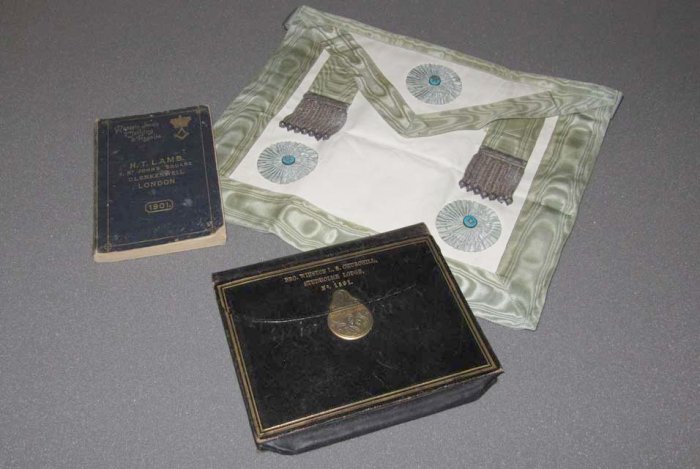 Sir Winston Churchill's apron, apron pouch and a 1901 H.T. Lamb catalogue, which must have been very much like the one used to order these good in 1902 (although the bill wasn't paid until 1904!). LONDON.- A number of members of parliament have been freemasons over the years, including Sir Winston Churchill. In 1902 Winston Churchill, half way through his first term as member of parliament for Oldham, placed an order for his apron from H.T. Lamb's catalogue, a copy of which can been found at 'The Masonic Emporium' which opened at the Library & Museum of Freemasonry in Freemasons' Hall in London's Covent Garden from Thursday 1 July until Thursday 23 December 2010. Costing £1 15s 0d (approx £142.00 in today's money) records on show at 'The Masonic Emporium' infer that the future prime minister did not in fact pay the bill for his purchase until 1904. Sir Winston Churchill's apron, and the case in which it was kept, are amongst the items on display in 'The Masonic Emporium' at the Library & Museum of Freemasonry. The apron case is inscribed - Bro. Winston L.S. Churchill Studholme Lodge No 1591 - in gold lettering.
Every lodge and every mason could acquire their full complement of required clothing and equipment from a single supplier. 'The Masonic Emporium' exhibition at the Library and Museum of Freemasonry explores the development of this market, telling the story of its suppliers and customers. It also explores how manufacturing for this market changed from a small scale cottage industry to larger scale production and how Masonic manufacturing took full advantage of increasing industrialisation.
|
|
Page XVIII | ||
By Valarie Honeycutt Spears
Wright said he believes this is a critical moment in the history of the Masons, which is said to be the world's oldest and largest fraternity. "They said with a strong voice that they are not going to discriminate," said Wright, 26, master of the 151-member Right Angle Lodge in Clark County. "I do think that there are a large number of them of a newer mind-set that they can put these differences behind them and work toward the goals that the fraternity has. They can become better men and make our communities better places," said Wright, who works for a military defense contractor.
The Masons are a worldwide fraternity of men who believe in God and work to help people through their charities, according to the Web site of the Grand Lodge of Kentucky. In Kentucky, they support homes for the elderly, a rehabilitation hospital for disabled children and other causes. There are 408 chapters in the state with more than 54,000 members. The Masons, according to the Web site, teach that a person has a responsibility to make things better in the world. Each state has a Grand Lodge that is the administrative body in charge of the Masons. "With any organization, you are going to have differing views, but we have learned to settle any differences amicably so that all may go with their heads held high and everyone satisfied," L. Todd Eastham, the Grand Master of the Grand Lodge of Kentucky, said after the vote. Tuesday was his last day in the position. Eastham said he was prohibited from providing a specific tally of the closed vote.
Wright, who was at the meeting where the vote was taken, said that judging from the comments of members who wanted to expel openly gay men, he expects there will be other attempts to change the constitution. It has no prohibition against openly gay men being members and does not mention homosexuality. "Being a member of this fraternity is something that is extremely important to me, and I am willing to fight to keep my membership," Wright said. "My father and paternal grandfather were also Masons, and I know they would want me to fight for what I believe is right. I will also fight for the other gay Masons in Kentucky so they can be themselves without fear of harassment from lodge members." Masons must be at least 18 and believe in God, according to the Web site. Disciplinary actions can be taken against a member who "habitually takes the name of God in vain" or engages in drunkenness.
When Wright became a member of the Masons in 2007, he was married, he said. In December 2009, he was elected to serve as the Master of his Winchester lodge. Wright and his wife filed for divorce in March 2010 because he realized he was gay, he said. In May, when some members of the Masons found out, "news of my sexual orientation spread ... like wildfire," he said. Since the meeting where he was asked to resign as Master of his lodge, some members "have been hostile toward me and my sexual orientation, but the majority have been accepting and tolerant,'' he said.
In June 2010, Hiram Lodge No. 4 in Frankfort proposed to change the state constitution, he said. The proposed change, which Wright provided, said: "Freemasonry is pro-family and recognizes marriage as between one man and one woman. Any other relationship is a violation of the moral law and therefore unmasonic conduct. Homosexual relationships, openly professed and practiced, are a violation of the moral law and therefore unmasonic conduct. No openly homosexual Freemason shall be allowed to retain membership in this grand jurisdiction." The Master of the Frankfort lodge could not be reached Tuesday. Wright said that before delegates voted on Monday, he spoke to the group, saying that "discrimination whether based on gender, race or sexual orientation is wrong and goes against everything that each and every one of us was taught." Despite the move to expel homosexuals from the fraternity, Eastham said, he has not received any official complaints about Wright or requests that Wright be removed as master of his lodge. Wright said he has two more months left in his term.
Josh Back, a member of the Right Angle Lodge, said he remains supportive of Wright: "He's still the same guy that I've always known." Back said, however, that he could empathize with members who had a difficult time making a decision. "It's sad that it had to come to a vote like this," Back said.
Wright said he also holds a leadership position at Lodge No. 25 in Richmond, where he attends Eastern Kentucky University, and some members there have told him he won't be able to mo ve up because he is openly gay. "I think it's not over by a long shot," he said. Wright ran for Madison County constable in the May primary and lost.
This Masonic Did U Know list is strictly volunteer. If you received this message in error or you wish to be removed, please reply to the author only and you will be removed, no questions asked. If you know of a Brother who would like to be added to our list, reply to author with the Brother's e mail address and it will be added immediately.
May We Meet Upon The _|_ Act By The ! And Part Upon The |_
W. Bro. Dwight D. Seals | ||
|
Having read many stories about Masonic Lodges all over the country having “Appreciation Breakfasts” for public service employees, the members of Waller Masonic Lodge #808 AF & AM decided to hold an Appreciation Breakfast for the Police, Fire and EMS employees in our area. We too, wanted to show our gratitude for their service to our area and make the Lodge better known.
As the secretary, I was ask to send invitation letters to our local area Police Departments, Fire Depts., County EMS, County Sheriffs Dept. and State Highway Patrol and put notices in the local newspapers. From experience, I put public service adds in the three local weekly newspapers the week of the Breakfast so it would be remembered. Rather then take a chance on things getting lost, I hand delivered invitations to the Police and Fire Departments of Waller, Hempstead and Prairie View, our local area towns, the Waller County Sheriffs Dept., Waller County EMS, and State of Texas Highway Patrol. Since we were new at this, we estimated we may get at least 5 or 6 employees from each department for a total of 50 or so hungry people. We bought biscuits, gravy mixings , eggs, sausage, bacon, ham, and jelly and preserves for that many people Come Saturday morning, October 23, 2010 at 7:00 am with the cooking started we opened the doors to an empty parking lot. By closing time at 10:00 am, we had served 2 policemen, 4 EMS workers and 1 public works employee and a handful of disappointed Waller Lodge Brothers who worked the event.
I think I can safely predict we will have a big breakfast for the meal at our next stated meeting. I think I can also predict that the “Appreciation Breakfast” will probably never become an annual event at Waller Masonic Lodge.
|
|
Page XIX |
By Archie and Dale Miller,
Archie's memories of this building go back to the 1950s, when the Christmas season included a group of children meeting Santa Claus, who to their great delight, had presents and treats for all to take home. Other memories from the period of the late '50s and into the '60s link to wandering around the building, poking around in some "really neat stuff" and finding some truly wonderful and eminently mysterious spaces in which things seemed to be hidden.
In time, his involvement with this particular place has led to ongoing research and interest in the entire Masonic story, both local and general. This includes determining formal Masonic locations in the city, tracking down details about the cemetery (then Masonic, now part of Fraser), describing background stories and information about some early Masons and their funerals, as well as preparing and presenting talks (illustrated or not) on the history of local Freemasonry.
Today, members of that same Lodge are carrying out some detailed searching of their premises in order to identify what they have in terms of their history, how it relates to this town, and how it is interconnected with the history and collection that makes up the Provincial Masonic Grand Lodge. We are pleased to be involved with this "search" and have been able, by reviewing our own Masonic collection, to assist with information and some identification. This is all quite dusty, often tedious, often frustrating, but always exciting.
One find was an old register that listed plot purchases in the Masonic Cemetery that now forms part of Fraser. The book was intriguing, not so much for what it listed but for what it did not.
Why aren't certain names in this book? Why do some lists seem incomplete? Why are some names in this book when you wouldn't expect them to be there? Who are some of the people who purchased early groups of burial plots? We know most but a few are quite mysterious.
A simple conclusion after a lot of consideration, is that there was a second volume - maybe still to be found somewhere. This is but one search example.
This building has a great story, as do the members of the various Masonic groups of the Royal City. You will hear much more in the next couple of years as they move to a major 150-year anniversary, and we are pleased and honoured to be there with them, helping to fill in their historical knowledge as well as add to our own. This fascinating search goes on - stay tuned.
New Westminster is a historically important city in the Greater Vancouver Regional District of British Columbia, Canada.
|
|
Page XX |
Part 1 of 2 from John Molnar
I read your "Open Letter" with interest, and it is
great to see that at least one EA in the State has
taken the time to read our Book of Constitutions
and give some thought to them. I wish I had had
the opportunity of discussing your concerns in the
South one night when I was there, because, while I
understand them, I think that you are only looking
at one side of the picture. As you had visited our
South many times before being initiated I am
surprised that you were not aware of our
educational requirements – but that is our fault -
not yours! You may not be aware that in Europe,
and indeed some lodges here, you cannot do more
than one degree in a year, and there are formal
written exams to "sit" and extra oral questions over
and above the usual questions we ask before
"passing" and "raising" in this jurisdiction.
But first things first – yes, you rightly point out
that there has been constitutional change in recent
times – not only to extend the period which must
elapse between degrees taken, but also to require
completion of formal educational modules
(otherwise known as "MAPs") for each degree.
And yes – a brother has to be a MM for 52 weeks
before he can be invested as anything other than a
Steward.
Let me take your questions one by one:
2. The fact of the matter was that it was clear that
brethren – possibly due to lack of numbers in
the lodges (or perhaps from lack of interest
amongst PMs who have "been there and done
that")– were being pressured to take office
when they had very little knowledge of the
lodge, the duties of the particular office, or the
Craft generally. This pressure burnt many
young masons out, and I suspect many left due
to this. Accordingly, it was felt that some sort
of time limits should be set to prevent this
happening, so, contrary to your view that this
was about "disallowing participation", it was
intended to be for the benefit of MMs. It was
to encourage them to get "comfortable" with
their role as Freemasons rather than
immediately put them under pressure to
perform.
3. These rules had nothing to do with "seniority"
and were never intended as such. The point
was that, frankly, too many lodges were not
teaching their new members anything. Forcing
them to take office before they were ready, the
lodges were then wondering why the new
MMs dropped away. You refer to merit – and
rightly so. But where is the merit if there is no
education, and no experience either? The fact
is that – apart from some lodges – there was
little by way of Masonic education. That was
the reason for the introduction of MAPs – and
it had nothing to do with seniority or rank at
all.
You rightly point out that as Freemasons we are all
equal. This is true. But requiring new members to
have some education does not undermine this core
value in my opinion – it ensures that the MM
learns something about the Craft. Anecdotally
anyway, it seems some PMs have been surprised at
the MAPs because when they attend them they
learned something new themselves! Hopefully as a
result of the MAPs the new MMs will be better
educated, and better equipped to enjoy their
Freemasonry. We'll still be equal – we'll just
know a bit more about it. |
By HAMISH RUTHERFORD -
Last year, the secretive society's highest body in New Zealand, the Grand Union, lost the tax-exempt status it had held since 1933.
Responsibility for determining charitable status was passed from the Inland Revenue Department to the Charities Commission in 2008, forcing thousands of organisations to reapply for tax exemptions.
High-profile organisations including Greenpeace and the Sensible Sentencing Trust have had their applications rejected.
Freemasons New Zealand appealed to the High Court last month, arguing that the Grand Lodge's primary activities were "beneficial to the community" and therefore charitable.
As well as directly charitable activities such as university scholarships (which the commission conceded were charitable), the lodge also teaches public speaking and lessons on ethics to its members, which it argued should also be considered charitable.
Acting for the Crown, Tania Warburton argued that many of the activities of the Grand Lodge were primarily for the benefit of its members, not the entire community. She said its membership, limited to men over the age of 21 who reached the rank of master mason, was too exclusive for a charity.
Judge Simon France rejected the Freemasons' appeal. He concluded that the activities of the Grand Lodge, and freemasonry in general, "do not benefit the public other than indirectly and intangibly by seeking to produce members who are better citizens".
Laurence Milton, the grand secretary for Freemasons New Zealand, said the decision meant the Grand Lodge would have to apply for separate charitable status for its Fund of Benevolence, which did most of its charitable work.
The administration and other activities of the Grand Lodge would now be subject to tax.
"We'd have liked the decision to have been in our favour, but it really won't affect our charitable activity all that much at all. It just means a bit more work for me and my office," Mr Milton said.
The organisation spent $3 million to $4m on charity in New Zealand each year.
|
|
Page XXI | |||||
In the October issue, I had an editorial about distressed Brothers suing their Grand Lodge in Civil Courts because they were dissatisfied with a Grand Lodge decision or edict that effected them.
In answer to my request, I received 3 emails from the 300 subscribers. Two were of the opinion that these lawsuits were definitely hurting Freemasonry and one argued that Grand Lodges should be sued anytime a Brother is dissatisfied with a decision from Grand Lodge. Hopefully, the anonymity of answering a poll will gain more results. Please click on your answer and then on vote. Corky.
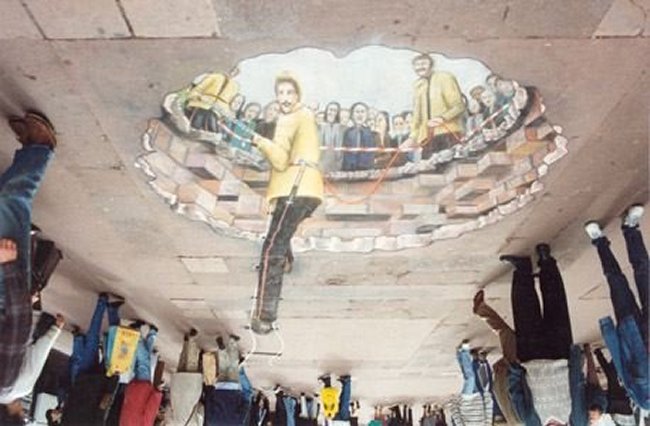 Drawn On A Flat Sidewalk With Colored Chalk.
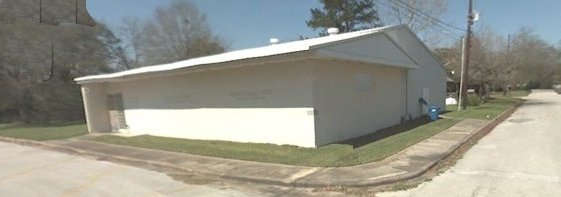 Waller Masonic Lodge #808 AF & AM Waller, Texas
A Redneck Riding Mower

|
|
All material in this site may be used to educate everyone, Freemasons and non-Freemasons alike about Freemasonry and for the promotion of Freemasonry. A very sincere effort is made to avoid using any copyrighted material, without permission or giving credit to the author and source, in the creation of this web site. If you discover something that is yours, without giving you due credit, please let me know and due credit will be given or the item will be replaced.
|
|
|

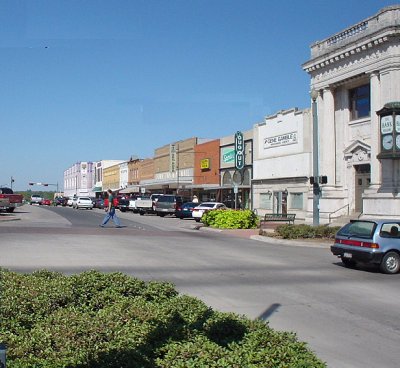
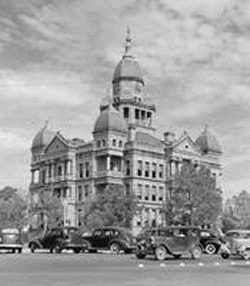
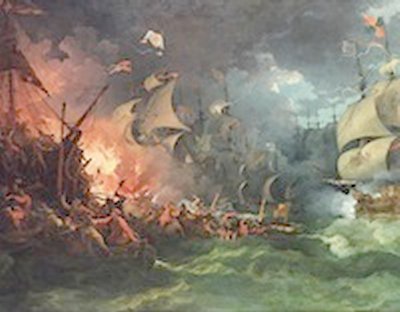
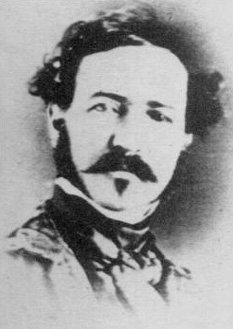
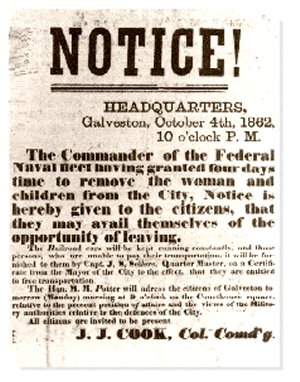
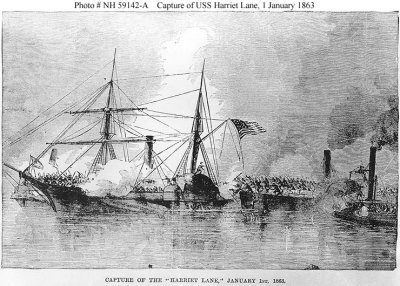
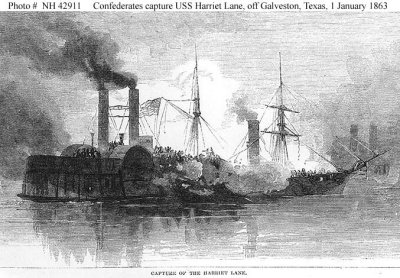
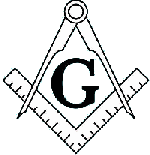
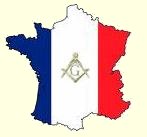
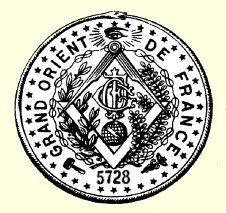
 I - The Grand Lodge of France works to the Glory 0f The Grand Architect Of The Universe
I - The Grand Lodge of France works to the Glory 0f The Grand Architect Of The Universe 